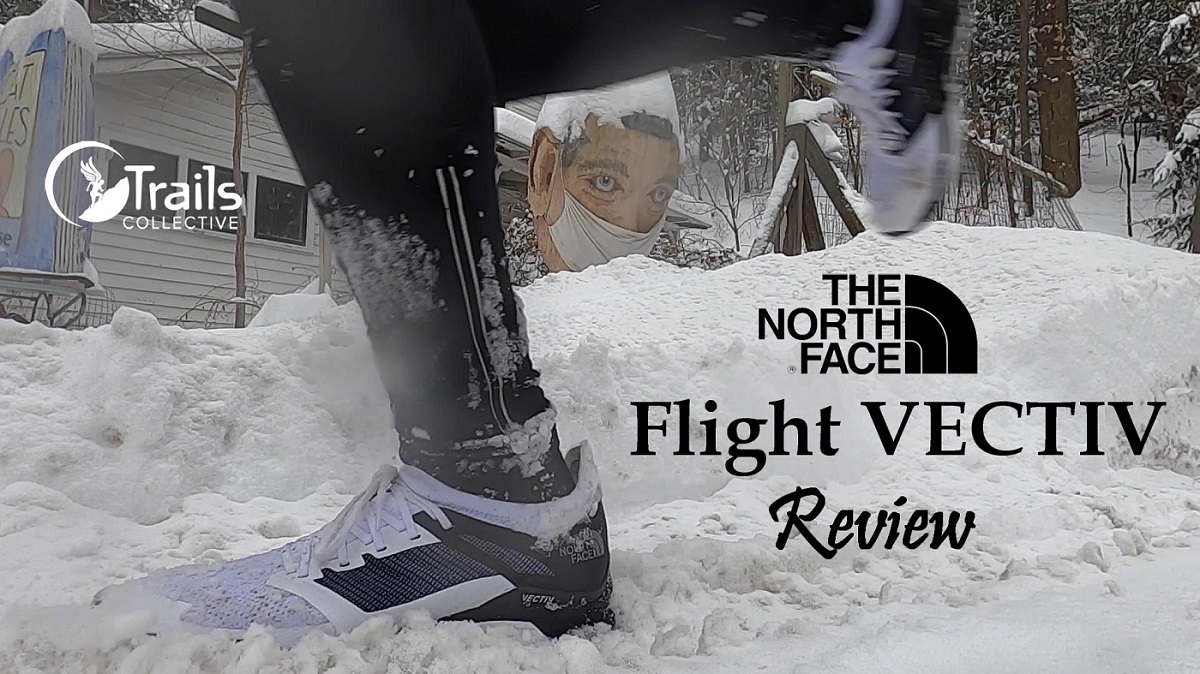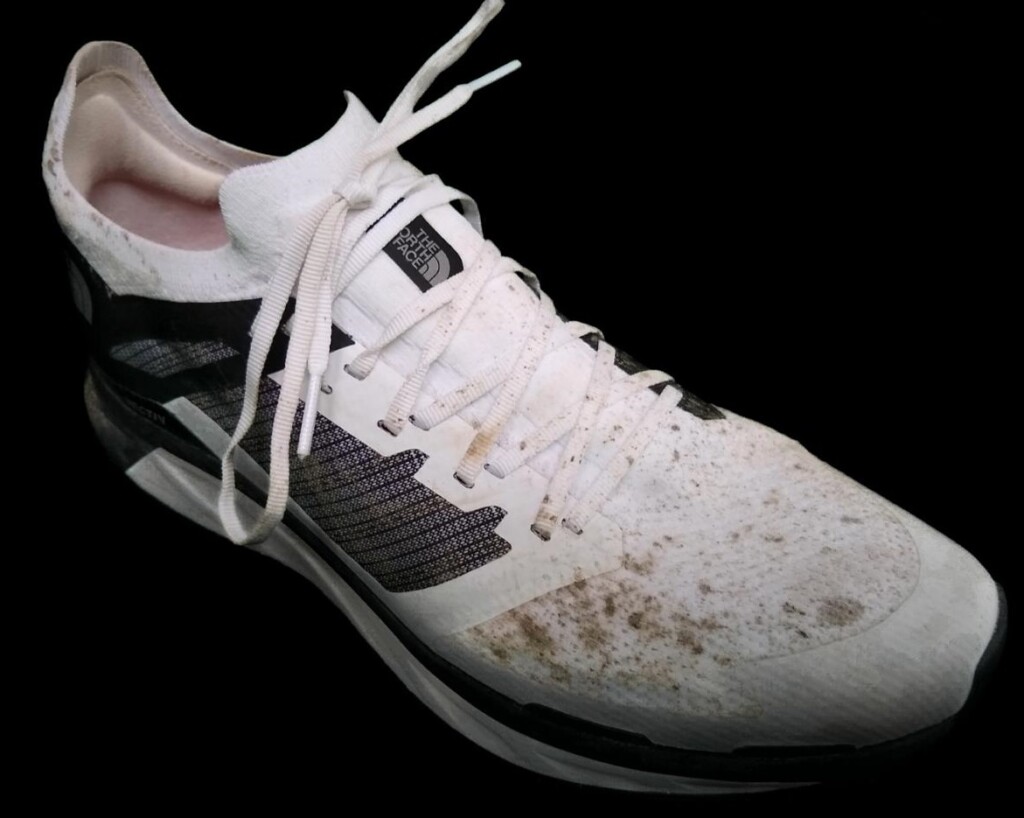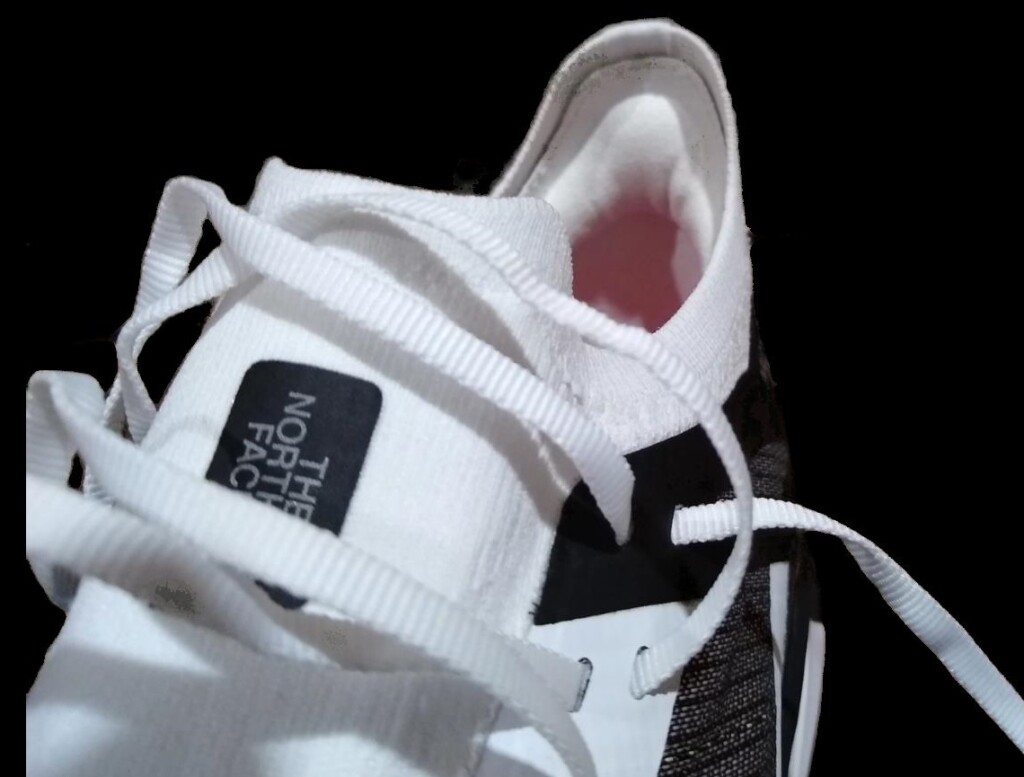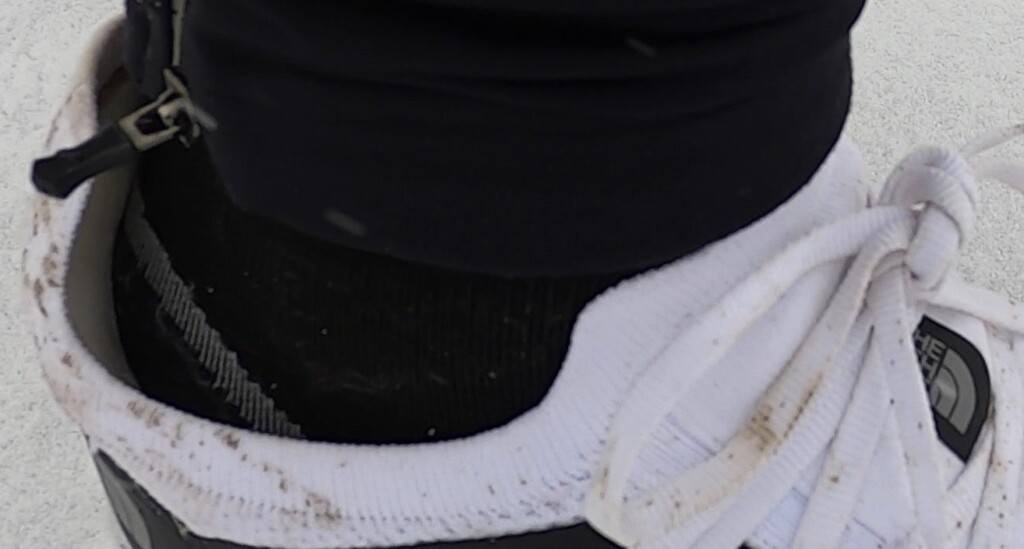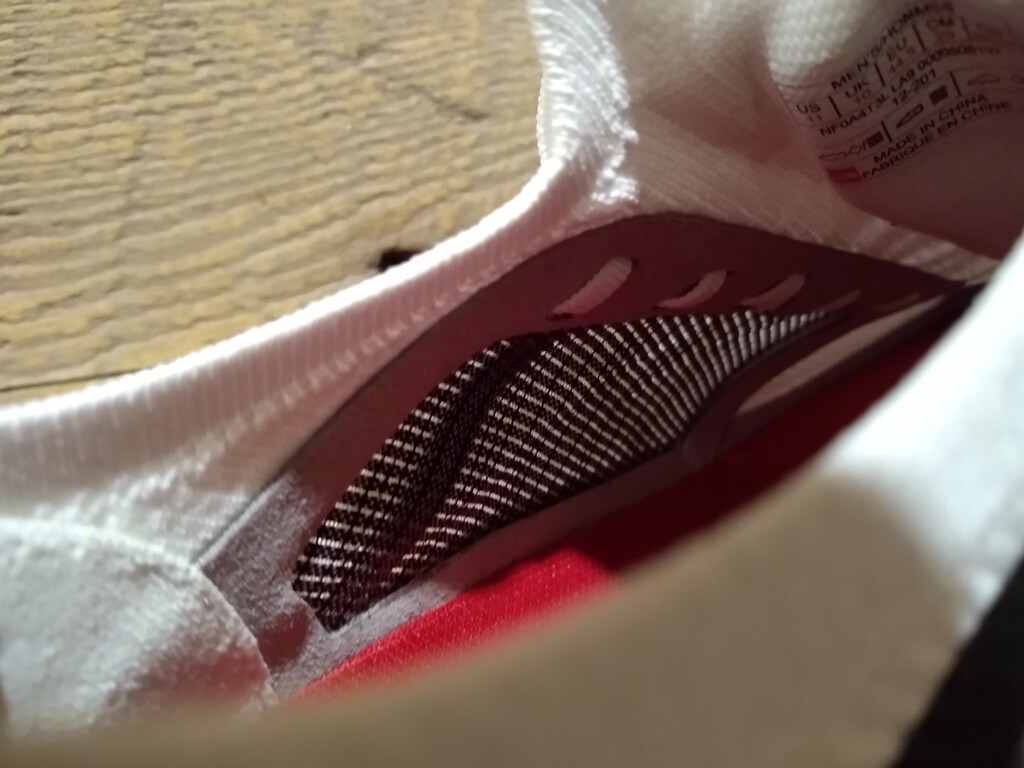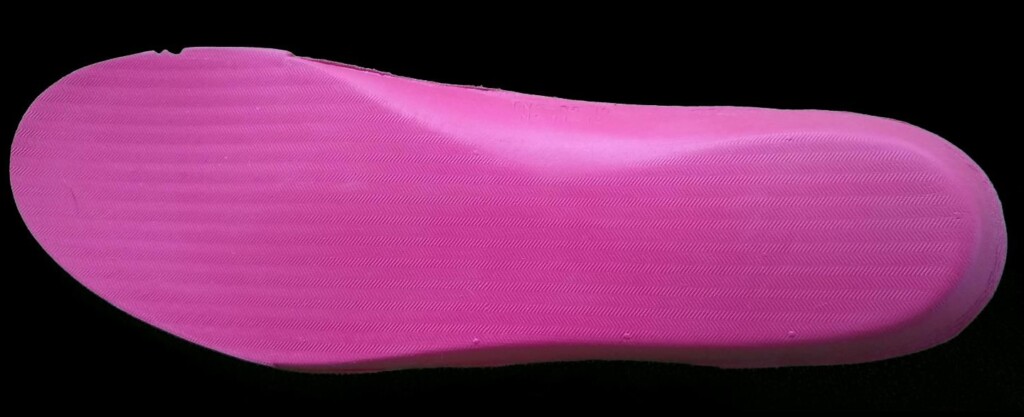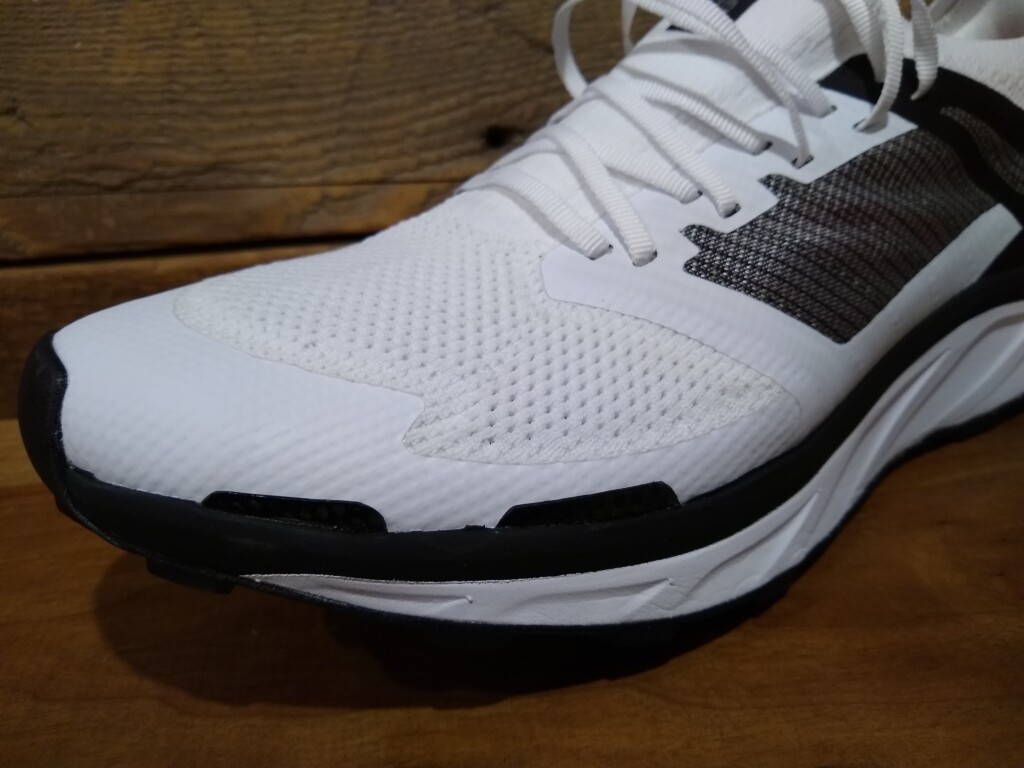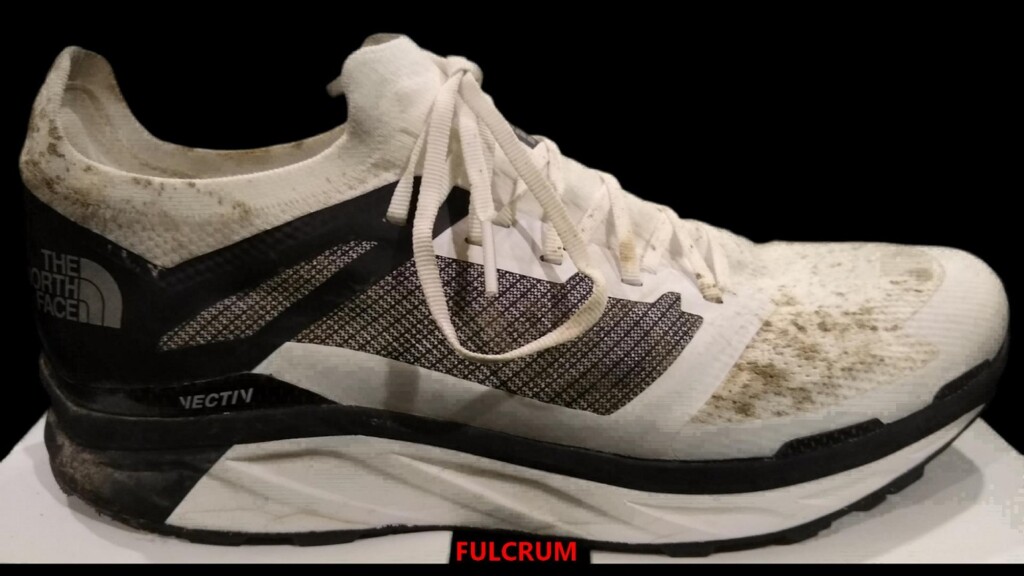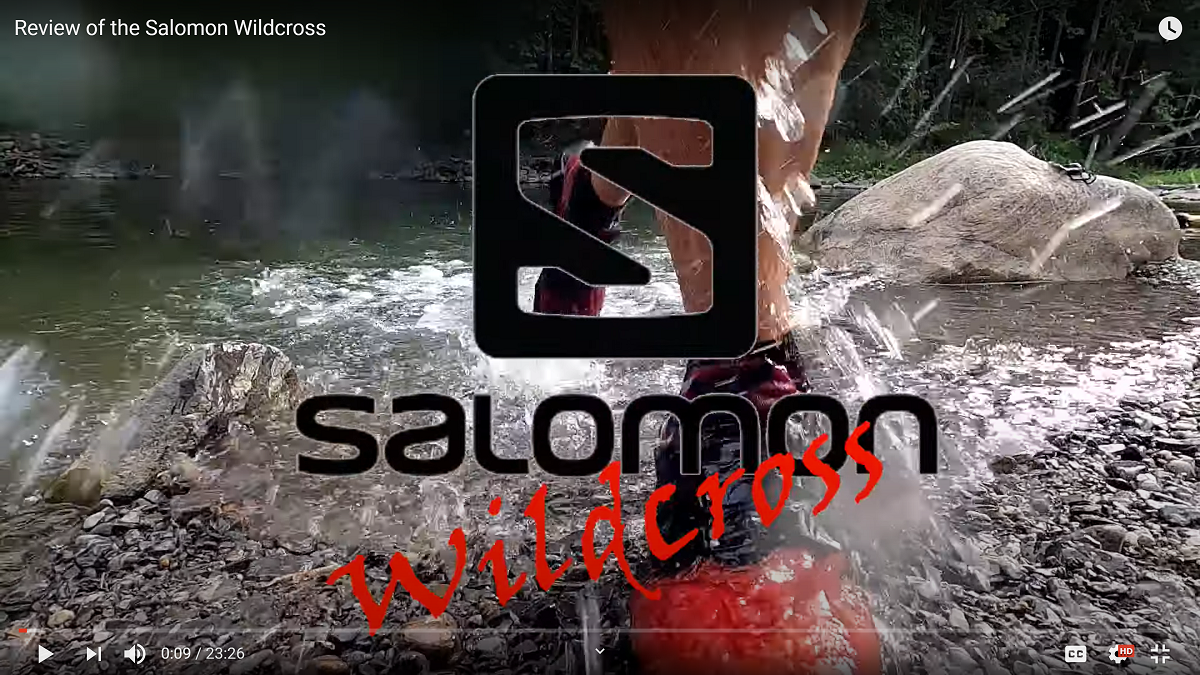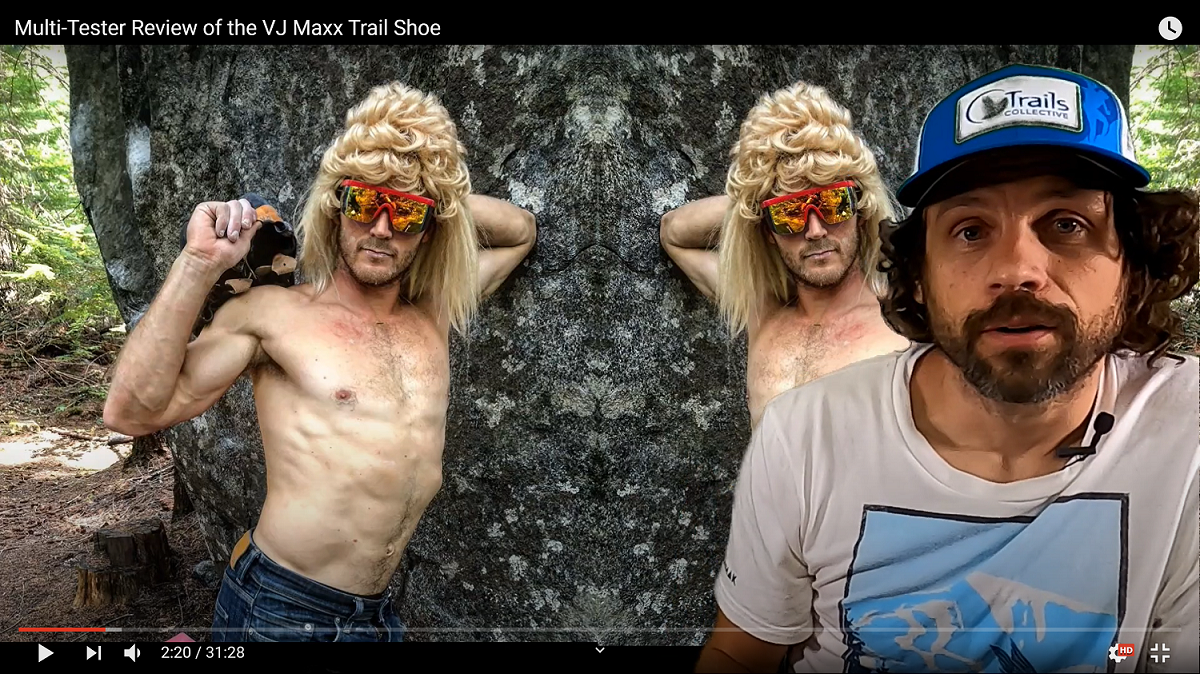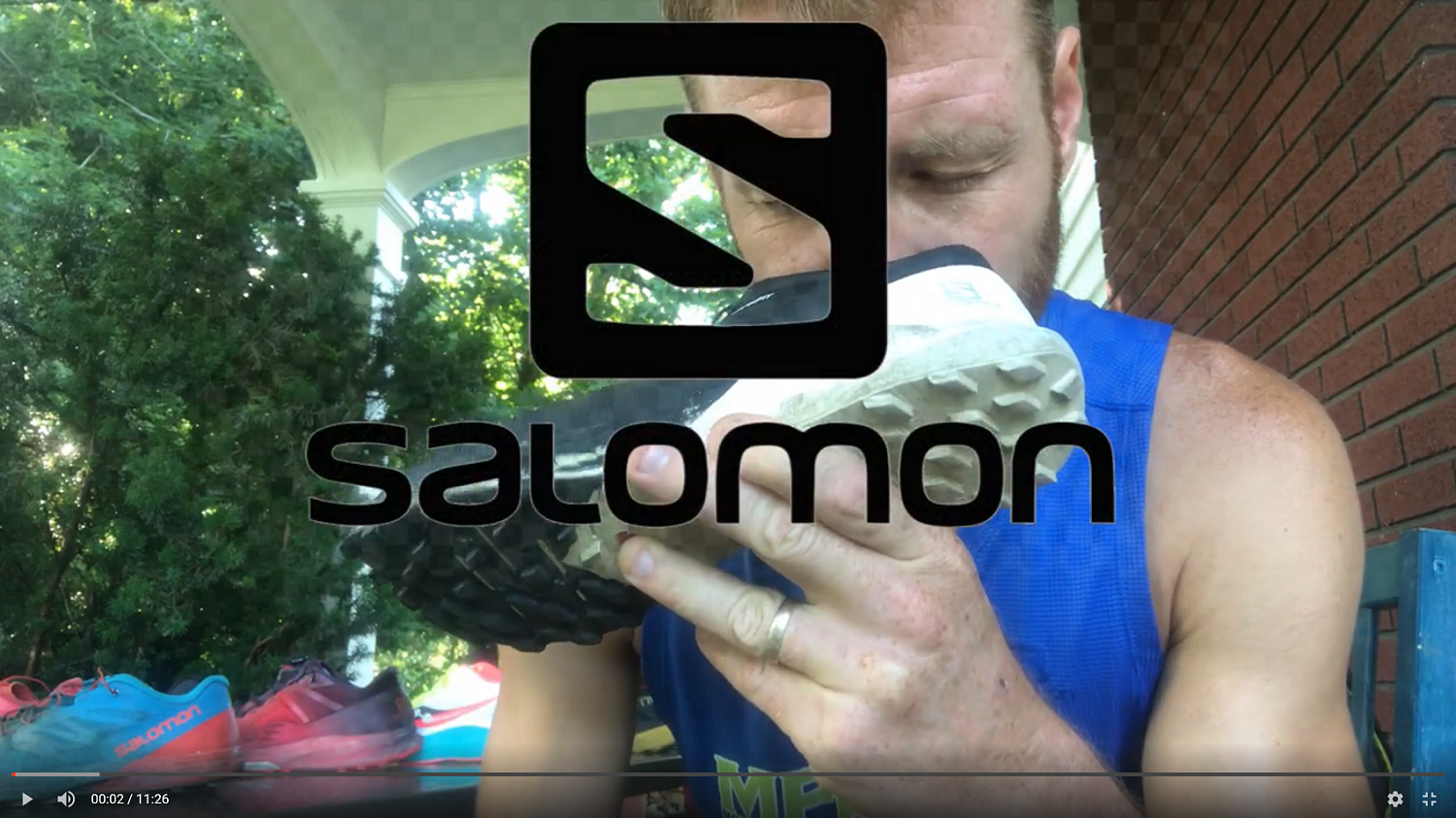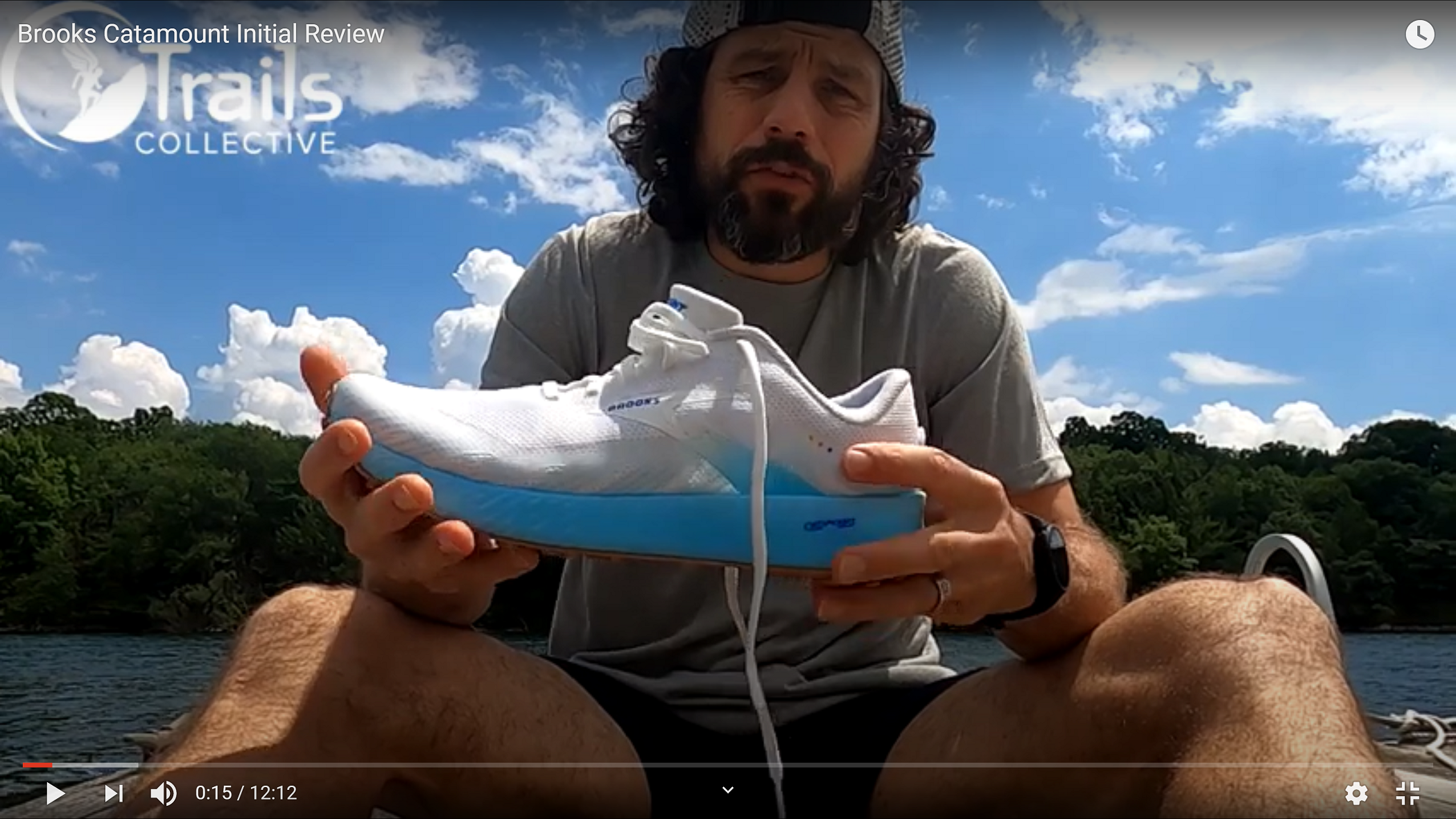The North Face Flight VECTIV Review
The North Face Flight VECTIV
The North Face, like all good entrepreneurs, created the Flight VECTIV to solve a real-world problem relayed by UTMB finishers. The “problem” isolated was that a strong number of entrants were reporting fatigue in the legs as a limiter to race performance. My first reaction? Of course runners will experience fatigue in the legs, they’re running 106 miles with 32,000 feet of elevation gain! If they’re not feeling significant fatigue they’re no doubt taking lots and lots of drugs.
What they came up with is a beautiful combination of materials and rocker geometry that they hope will aid in propulsion and reduce pinpoint loading forces. The combination of engineered knit and Matryx in the upper provides a plush feel with durable sidewalls. The carbon plate dovetails really well with the EVA midsole and rocker geometry. The Surface CTRL outsole rubber holds its own in stickiness. But, is the final product all sunshine and lollipops and worth the $199 pricetag? Let’s dig in.
“A White Trail Shoe?”
The better part of me wanted to post this review without mention of North Face’s choice of colors. However, it’s one of the most common opening questions if not criticisms in discussion of the Flight VECTIV. I’m also not going to lie, I too wanted to put my palm to my forehead when I first saw it in pre-production. The simple answer is branding. Black and white are their trail team colors and you need a strong brand identity and marketing tie-in for a pretty big rollout. While it wouldn’t be my first choice, and The North Face and shops will without a doubt lose sales on account of it, it’s honestly not a primary concern with a shoe. So, let’s dig into what matters, and start with the specs.
Specs
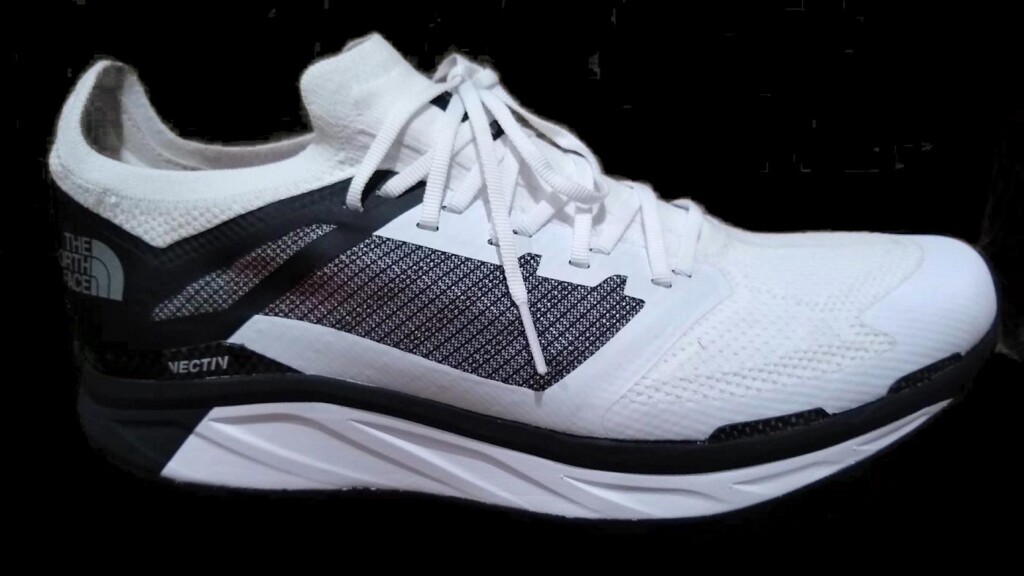
Price: $199
Weight: 10.0 oz (M9) / 8.6 oz (W8) (Not verified in-house)
Sizing: Runs true to size
In-House Measure of Stack Heights:
Insole: 3.5mm
Lasting: 2.5mm
Plate: 2mm
Midsole Stack: 19mm / 13mm
Base Outsole Rubber: 2mm
Outsole Lugs: 4mm
Combined Stack: 33mm / 27mm
*North Face Listed Stack: 25mm / 19mm (Which, I believe must reflect the insole through to midsole depth)
Drop: 6mm
Upper
The Flight VECTIV upper is pretty slick. The forefoot is comprised of a soft engineered knit fabric that extends into the tongue and heel collar. It uses Aramid-woven Matryx, a material I first experienced and reviewed as used in Salomon’s S/Lab Cross, to wrap the midfoot. A rubberized toe guard extends to the rear of the shoe for abrasion resistance and support to counter pushing out over the base. Spot-padded inlays with thin knit material above replaces a traditional heel collar and there’s an absence of an internal heel cup. Let’s dive further into each of these components in materials, design, and function.
Heel Collar
The thin and spot padded heel collar, an extension of the forefoot and tongue, feels great. Wedge shaped heel cup padding sits atop the calcaneus and encapsulates the Achilles, and is overlaid with what feels like soft suede. The thin stretch fabric used for the heel collar allows greater contact with the ankle around the malleoli than the Infinite. TPU wraps the outer heel for a bit of structural integrity, and extends to meet the upper most eyelet and vamp. I don’t feel any gravitation of the heel out of the cup, and the rearfoot feels stable over the base.
Improvement Needed
The heel collar does feel really good around the ankle. However, I wouldn’t say it’s quite dialed yet. Whereas debris may fall into the gap between the ankle and heel collar in traditionally padded heel collars, there’s a chance a slight upward gravitation at the ankle will push the debris back out. The Flight VECTIV’s knit fabric design traps the debris on top of the heel cushion where it either stays, or slips into the shoe. While the Flight VECTIV’s design is an improvement over the VECTIV Infinite, both can still pocket dirt and stones (or, in today’s case, snow).
The Tongue
The tongue’s stretch fabric is a continuous weave joined with the heel collar and forefoot. It’s seamed to the vamp with a TPU overlay. This design provides a seamless gusset and anchor. Because the eyelets are mere perforations in the TPU overlay, pressure points are minimized over the tarsal bones. This design, paired with flat laces, requires that the tongue only have light spot padding woven into the stretch knit. I foresee that some wearers may complain about lack of padding in the tongue but I’ve had no issues there and think it’s a smooth design.
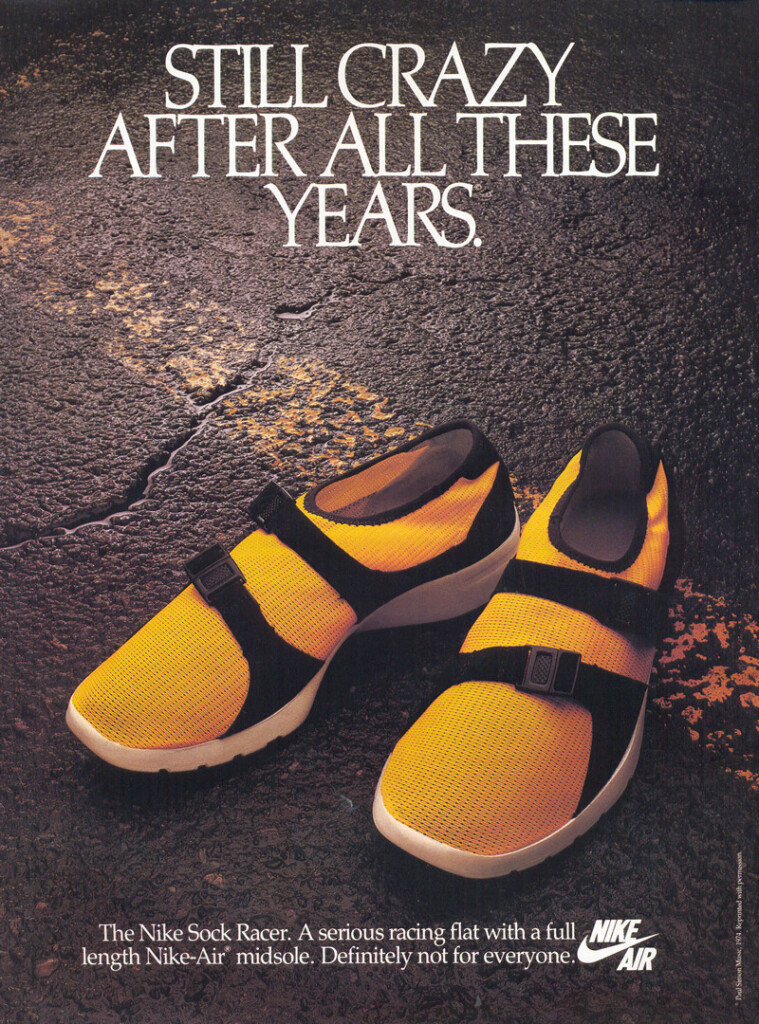
The Flight Vectiv’s one-piece woven tongue design is one of the best that I’ve worn. An evolution from one of my earlier memories of my brother’s Nike Sock Racers from 1985.
Quarters
The tongue meets the quarter-panel’s Matryx fabric with TPU overlays. As I’ve mentioned in prior reviews, I really like the Aramid-laced Matryx fabric. The Aramid fiber (one tradename is Kevlar) provides a thin, flexible fabric offering exceptional durability. It’s thin, flexible, woven tightly enough to keep out dirt and debris, but porous enough to breath. While I only have 50 miles into the Flight VECTIV and S/Lab Cross, and a hundred into the Infinite, so far, the fabric doesn’t show signs of degradation. While the Matryx does provide a flexible yet structured sidewalls, in the Flight VECTIV the medial and lateral support seems to come more from the welded TPU overlays.
Another benefit is that Matryx is hydrophobic. You can feel water immediately drain off the fabric after submersive water crossings. As I mentioned in the review of the VECTIV Infinite, the hydrophobic benefit is negated by the TPU toe and vamp caps in the forefoot and sidewalls that unintentionally retain water.
Vamp
The toebox or forefoot of the Flight VECTIV is an extension of the engineered knit in the tongue. It’s a soft fabric with plenty of stretch capacity for your metatarsals to push out when needed. Laminated to and wrapping that knit is a toeguard, welded around the toebox for abrasion resistance and durability. That toe guard extends around the shoe to the quarter panels where they also aid in offering support over off-camber pitches. The materials are nice with no pinches and indeed offering support, but, there is a design flaw as it pertains to trail.
Improvement (or Modification) Needed
The rubberized toe cap, which extends around the shoe, handles abrasion well, is soft, and pliable. However, they act to negate one of the highlights of the upper which is the hydrophobic properties of the Matryx fabric. Once the water is in, and quickly drains off, it literally has nowhere to go. Without perforations in the rubberized 360 degree guards, or through the midsole, water is literally locked in like a pool. A v2 needs drainage perforations. They would also though be easy for an individual to add.
Insole
North Faces uses an Ortholite insole in the VECTIV Infinite’s, an insole also used and noted in prior reviews of the Topo Ultraventure Pro and MTN Racer. The porous Ortholite insole is soft but acts like a sponge when wet. I was excited to find that Flight VECTIV’s insole is a step up in being less porous, and doesn’t absorb water nearly as much.
VECTIV Plate
Material
The VECTIV 3D plate used in the Flight VECTIV is made from Carbon. It’s lighter, more durable, and snappier than the Pebax (thermoplastic) used in the VECTIV Infinite or TPU used in the VECTIV Enduris. The Flight’s plate is designed for max propulsion in material and geometry, vs the Infinite’s which is designed to be more balanced. While I know that it’s there, I have a tough time teasing out plate propulsion from the chassis’ rocker geometry. I also don’t know if the plate as designed could stand alone outside of rocker integration. So, it’s tough to weigh in on feel and/or performance benefit of it as a focal point.
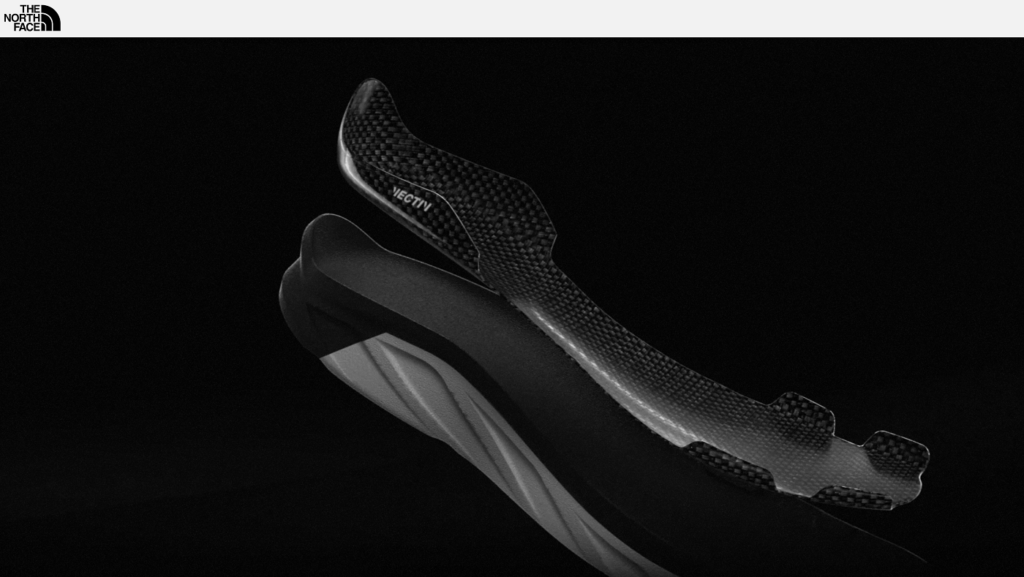
Design
The 3D plate is shaped with tabs that wrap up and over the upper in the rear through midfoot, with two separated in the forefoot. Those tabs offer a two-part function. One is in the configuration of a 3D design, or shape, designed to increase its durability through lessening it packing out. The other, in response to their athlete testing, is to aid in keeping the foot mechanically stable over the base of the shoe over technical terrain.
Improvement to Consider
The 3D design of the Flight VECTIV’s plate no doubt contributes increased resiliency of the materials. The wrapping of that plate up onto the upper in the heel to midfoot no doubt also contributes to increased off-camber stability. However, unless someone has a narrow toeline, the exterior tabs in the forefoot could be a nuisance if not problematic over ultra distances.
For me, I have a stubby 5th toe (thanks grandma) and am sensitive to shoes that cut too aggressively in on the outside of the toebox. On steeper and technical descents in the Infinite, and similarly in the Flight, my 5th toe pushes out on the rubberized toeguard. The toeguard itself would be enough to contain the motion. What I end up feeling though is my 5th toe pushing into the plastic tab. I’ve run the Infinite and Flight each over 20 mile runs. While it hasn’t caused bruising or abrasion, I do wonder about the impact of ultra distances with significant elevation loss.
Midsole
Geometry
The rocker geometry of the midsole / plate combination is the most remarkable feature of the VECTIV series. North Face definitely went all-in on the design concept. The design is more aggressive than rockered road or trail shoes I’ve worn with the closest comparison being the Skechers Razor.
As you can see in the image above, I’m able to slide paper in from the front and back clean through to the center two lugs of the Flight VECTIV. This creates a focal pivot point or fulcrum of only about 35mm or 1.5 inches. The VECTIV Infinite was first up in my rotation. Any immediate question of whether I’d really feel the rocker design before trying them on was immediately dispelled. That feeling carries over in the Flight VECTIV as well. In a follow-up review round I’ll compare the Flight VECTIV, and VECTIV Infinite side by side. Until I do that, I don’t know that I can really tell the difference between the two plates.
Material
The midsole material is a dual density EVA with the upper black layer having a slightly firmer durometer of 55. I’d guess this offers a bit more responsiveness underfoot, and dovetails with the plate. The lower white layer reports in with a softer durometer of 45 for shock absorption and conforming to variable terrain. While most top tier running brands have move beyond EVA for their midsoles, it seems to work well enough in the VECTIVs. I anticipate that it will also receive a bit longer time to compression thanks to the protection of the plate above.
Function
The underfoot feel is firmer and more responsive than plated road models such as those from Nike, Saucony, or Hoka. I believe you feel the midsole rocker more than you do the plate, though it’s tough to know what they’d feel like in isolation. Given I want a predictably responsive underfoot feel on the trail, rather than a springy trampoline, I think this is a good thing.
My Feelings on Rocking Out
Benefits of Rocker Geometry
Studies have found that rocker bottom running shoes can reduce midfoot and calf loading, particularly in midfoot strikers. North Face no doubt did considerable testing on those potentials, and I’m really interested in that data. I haven’t been provided a window there but will include it down the line if I am shared in the findings. Despite those studies and benefits, I generally have negative feelings towards rocker design footwear. Here’s why.
Rocking with Our Anatomy?
Our feet have evolved very specifically to work within a larger mechanical chain designed to propel us over variable terrain. Rocker mechanics however negate the anatomy and physiology of our lower extremities. You can seek to increase the body’s ability to roll through midstance, but to do so is to ignore prime functions of midstance. Those arches are critical for adaptation to variable terrain and accommodation of impact. They’re also prime players in the translation of sequential loading into energy return with other components in the foot. There have to be functional tradeoffs somewhere in the equation, or we’ll need a thousand years or so to evolve around the design “improvement”.
The Result?
The apex of the VECTIV rocker design closely mirrors, in an inverse relationship, the apex of the medial and lateral longitudinal arches in the foot. The foot is specifically designed to absorb impact while adapting to uneven terrain. Further, they’re designed to take that impact and channel it into forward propulsion. You can take that ability away, but the forces have to go somewhere.
Those same studies found a corresponding increased loading in the knees. Additional studies have found a reduction in running economy with an increase in oxygen consumption required, at least until adapted. And others, a potential increase in instability. While I come bearing a pre-loaded filter opposed to rocker bottoms, both the Infinite and Flight VECTIV have felt quite smooth underfoot. I do make heel contact first, so my gait isn’t the best fit for rocker designs. I have experienced a bit more soreness in my quads and stress in my metatarsals, but I can’t be sure that’s not related to running in recent snow cover.
Outsole
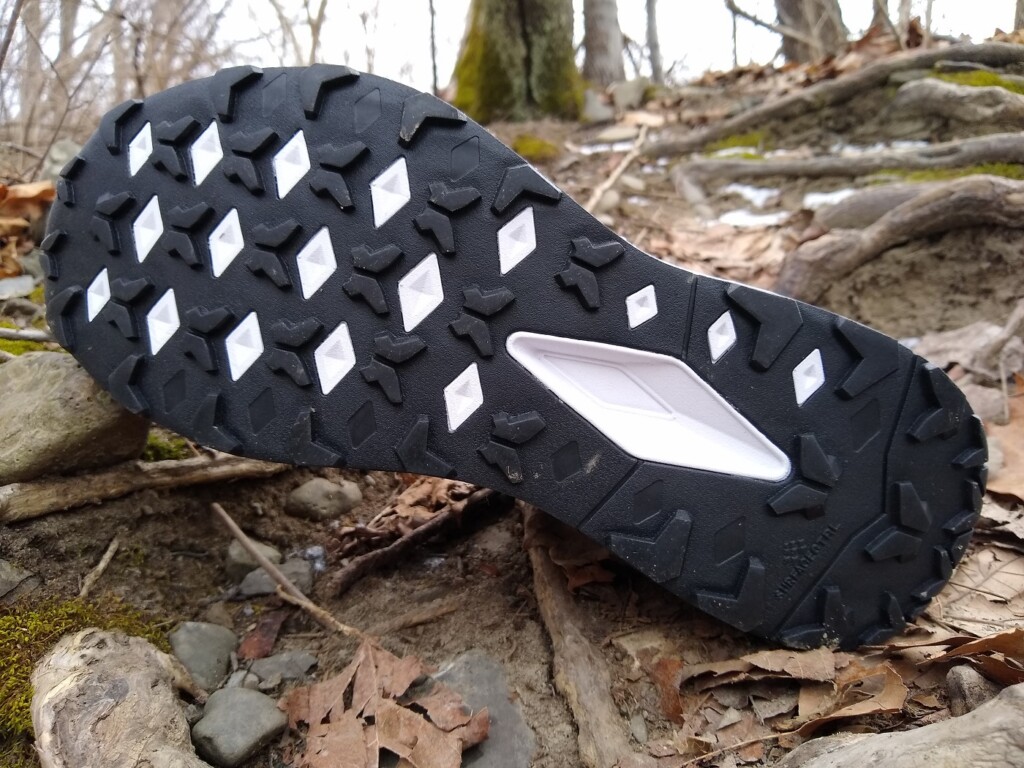
Material
The VECTIV Infinite’s outsole is comprised of a proprietary 40% plant-based rubber compound with high sticky / durability coefficient. The outsole trade name and configuration is SurfaceCTRL. The plant or bio-injection is designed to make the rubber more biodegradable once it shaves off and grinds into the dirt. Praise due to North Face for that consideration. In our testing of most of the major outsole rubbers, SurfaceCTRL held its own. It’s not the stickiest compound on the market, but it’s a pretty solid second tier and will do just fine for most environments.
Design
The majority of 3.5mm lugs have a butterfly shapes for multi-directional grip, with center grooves, I’m guessing, to serve as water channels. The perimeter lugs have more of a “V” shape for both pulling back on the ascent, and braking resistance on the descents.
Function
The rubber is fairly soft, and with road miles in the mix for both the Flight and Infinite I’ve begun to shave off the rear lug with heel strike / abrasion. With the exception of Inov8’s Graphene (as reviewed in the TerraUltra G 270), I’ll shave off nearly all outsoles in that spot with any amount of road running. The outsole lug design has indeed proved versatile, and the outsole rubber relatively sticky over even slick surfaces. And, I do like and value the eco angle of bio-infused rubber. At only 3.5mm the lugs will provide versatility, but not be your go-to shoe for mud.
For a glimpse into how the SurfaceCTRL stacks up against some of the top outsole rubbers on the market and trails, check out our deep dive comp here.
The North Face’s SurfaceCTRL held its own.
The Takeaway
The $199 price point, and decision to go with marketing over market in choice colorway, will no doubt make the Flight VECTIV a no-go for many trail runners. The North Face however has done a great job in moving their trail shoe materials and design into a tier worthy of their brand intention and athletes. They pulled off a plush engineered upper as much at home on a bare casual foot as a technical switchback. A combination of thin, breathable quarter panels that provide support without pinching. A rocker bottom that still performs well over variable trail terrain. An outsole that’s both versatile, and able to stick to most surfaces.
The Flight VECTIV isn’t without a few shortcomings, but the materials and design make for an innovative great package that justifies the price point. While I’m still not making the case for rocker geometry, it truly is fun to run. Finder a dealer in your neck of the woods to try a pair on, or reach out to us here at the Trails Collective and we’ll see if we can get pair headed your way. North Face, thanks for committing some serious time and resources to pushing the bar and we’re looking forward to the VECTIV evolution.


